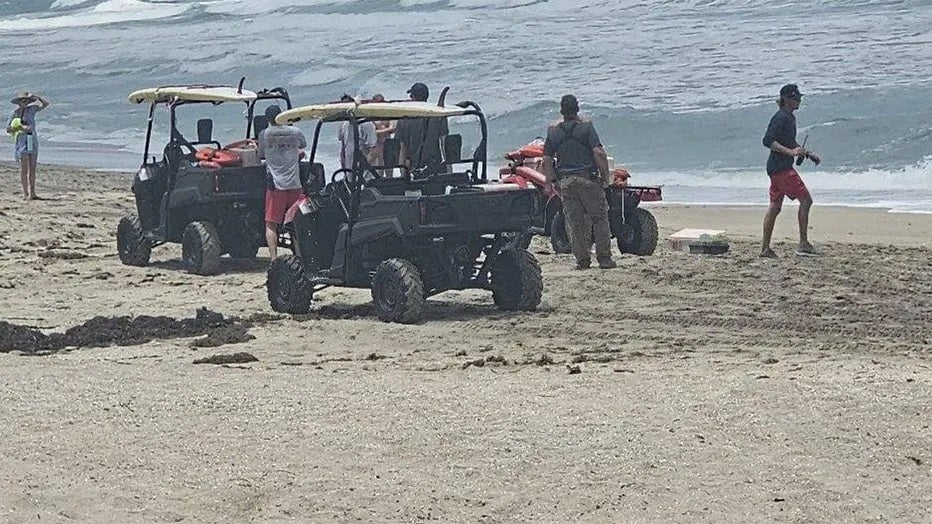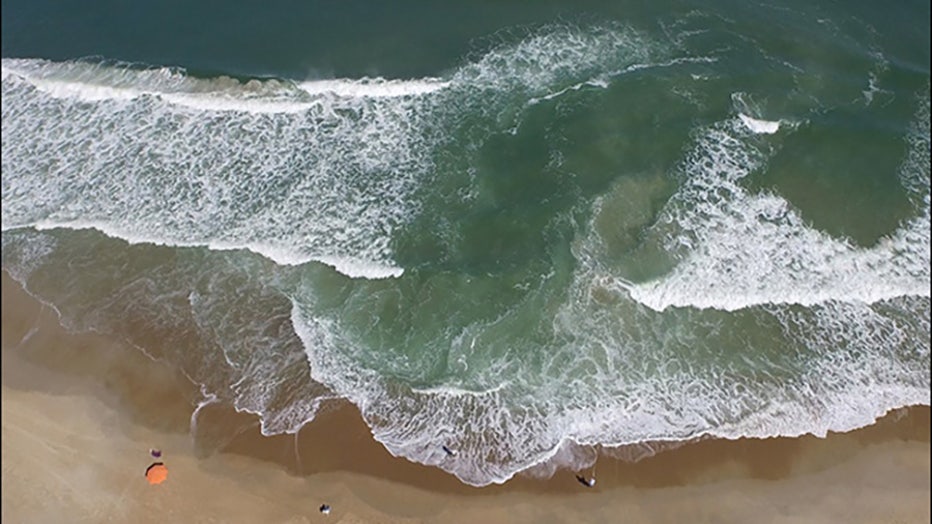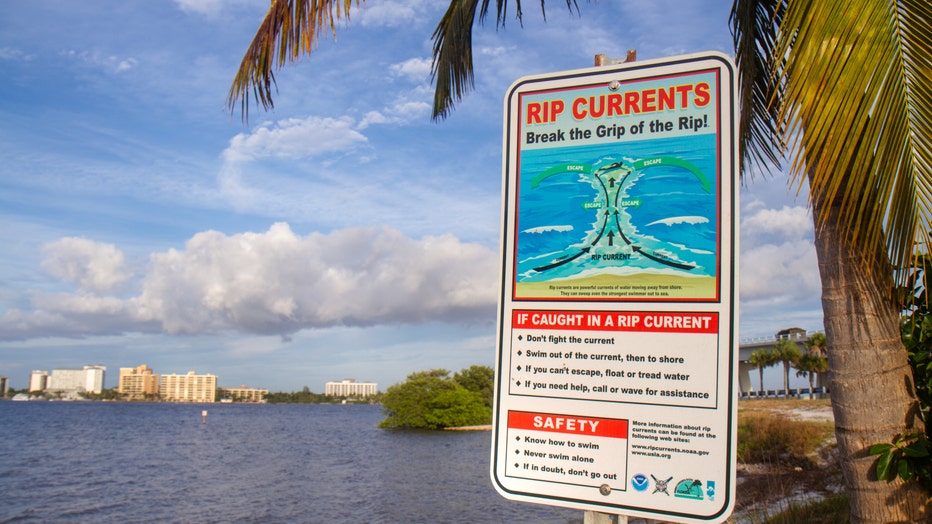How to escape a rip current
The deaths of a Pennsylvania couple who drowned in a rip current at a Florida beach have highlighted the extreme dangers of rip currents – even for the strongest of swimmers.
Brian Warter, 51, and Erica Wishard, 48, were on the beach at Hutchinson Island, which is near Port St. Lucie, Florida, with their six mostly teenage children, FOX 13 news reports. They were enjoying a day at the beach when the couple and two of the teens got swept out by a rip current, deputies said.
The teens were able to break the current and tried to help their parents, but it became too dangerous, and they were forced to swim ashore, according to the sheriff's office. Rescue crews found Warter and Wishard and took them to a hospital, but the couple did not survive.
What is a rip current?
Rip currents are narrow currents in the surf zone that move quickly away from shore, according to the National Oceanic and Atmospheric Administration (NOAA).

Florida rescue crews search for couple who drowned in rip current (Martin County Sheriff's Office)
Rip currents are typically 50-100 feet wide and can extend 100 yards or more offshore. A rip current can reach speeds of over 5 miles per hour – "faster than an Olympic swimmer" – and carry even strong swimmers far from shore.
Waves don’t have to be big for a rip current to form - two or three feet are all it takes – and they often occur when the weather is nice, days after a storm.
They’re usually strongest near low tide, but can form at any time.
READ MORE: US beaches and pools could be less safe this summer
Rip currents often form at sand bars – namely breaks or channels in the bar – near the shore. They occur at breaks or channels in the bar.
Rip currents stay close to shore and usually break up just beyond the line of breaking waves. Occasionally, a rip current can push someone hundreds of yards offshore.
How to spot a rip current
Rip currents can be hard to see, but you can spot them in areas where waves aren’t breaking, or where there’s foam, seaweed or discolored water being pulled offshore, NOAA explains.
They’re also easier to see from higher up – like a lifeguard’s tower or atop a sand dune.
Here are the different types of rip currents you may encounter on U.S. beaches, according to the National Weather Service:

Examples of different types of rip currents. The top panels show channelized rip currents as areas of darker water between regions of breaking waves and whitewater. The bottom panels show flash rip currents characterized by plumes of turbulent water
Rip currents vs. undertow
A rip current is different from – and much more dangerous than – an undertow, NOAA explains.
An undertow happens when water sinks backhill into the sea after a wave carries it uphill onto the beach. If the tide is high, the wave is large and the beach slopes sharply downhill into the water, the undertow could knock you down, but it won’t carry you far. It may cause you to be smacked by the next big wave coming in.
When waves hit the beach in a way that creates a current and flow away from the beach, that’s a rip current. When waves travel from deep to shallow water, they break near the shoreline and generate currents that are influenced by the shape of the ocean floor, at times producing rip currents. Waves interacting with each other can also cause short-lived rip currents.
Why are rip currents so dangerous?

Aerial photo of a rip current (National Weather Service)
Rip currents are dangerous because they can be hard to spot and pull even the strongest of swimmers away from shore.
Rip currents have been known to reach speeds of up to 8 feet per second.
In the U.S., about 100 people drown in rip currents every year, NOAA says. Lifeguards rescue another 30,000 swimmers from rip currents each year.
How to escape a rip current

(NOAA)
Here’s how to escape a rip current, according to NOAA:
- Don’t panic.
- Continue to breathe and keep your head above water.
- Stay afloat and yell for help (don’t try to swim against the current; you’ll only tire yourself out)
- You can also swim parallel to the shore to try and escape the rip current. This gives you more time to be rescued or get back to shore after the current eases.
How to stay safe while swimming near rip currents

FILE - A rip currents safety sign at Punta Rassa Park. (Photo by: Jeffrey Greenberg/Universal Images Group via Getty Images)
NOAA recommends the following steps for beachgoers to stay safe from rip currents:
- Swim with a buddy.
- Swim near a lifeguard.
- Learn how to spot a rip current.

